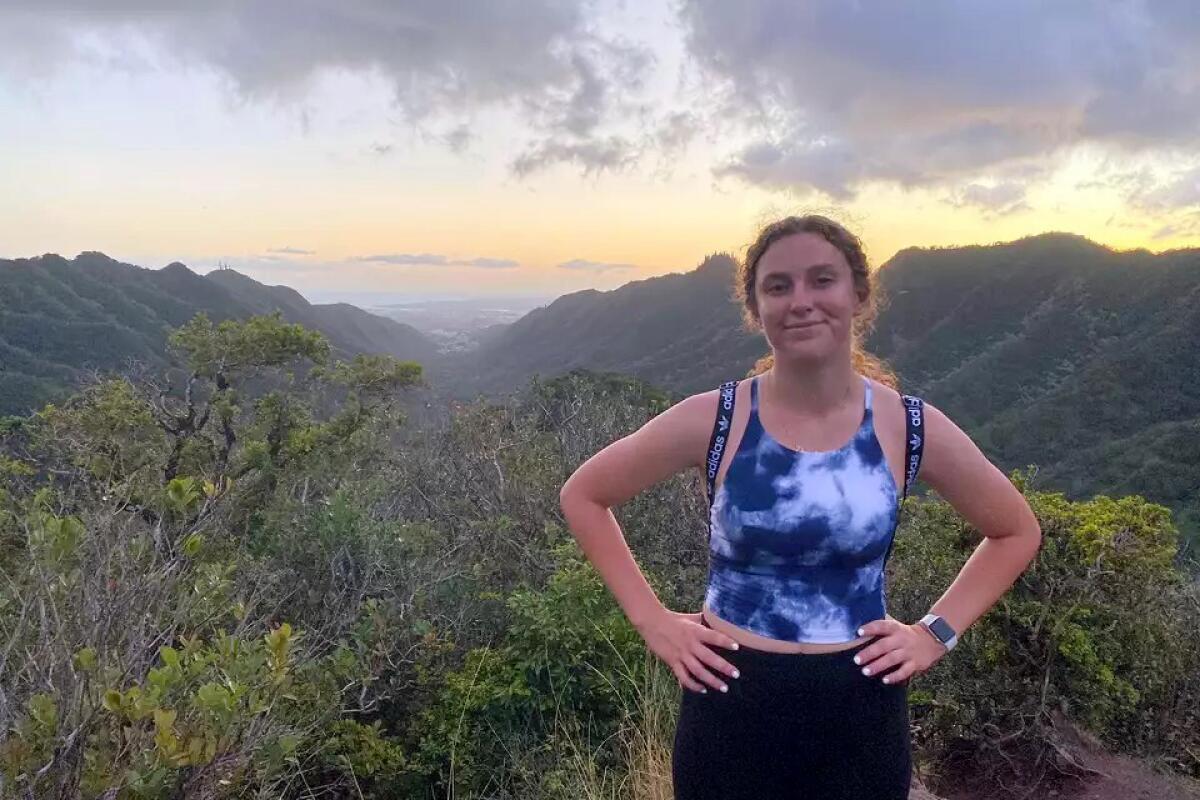Good morning. It’s Friday, Aug. 9. Here’s what you need to know to start your day.
A death at Yosemite leaves hikers questioning the safety of Half Dome
The splendor of Yosemite National Park draws millions of visitors each year, seeking the wonder and grandeur of California’s incomparable Sierra Nevada.
For many, the trip is not complete without a view of the towering Half Dome. For a lucky subgroup of visitors who win in a permit lottery, it also includes a trek up the granite giant’s backside of the 8,800-foot summit.
As if the extremely vertical path to reach the top wasn’t harrowing enough, the infrastructure that makes ascent possible to non-superhuman climbers is mostly unchanged since it was first installed over a century ago.
It consists of two steel cables threaded along steel posts anchored into the rocks, with unevenly spaced wood rungs drilled into the rockface. It’s famously treacherous and sometimes the site of tragedy.
That was the case last month when 20-year-old Grace Rohloff slipped on the rain-slicked rock, lost her grip on the cables and fell to her death as her father, Jonathan Rohloff, watched helplessly.

Grace Rohloff, 20, died while hiking Half Dome this month. Her father is pushing for safety measures for the cable suspension system that hikers use for the last leg up to the summit. (Jonathan Rohloff)
Jonathan has been calling on the National Park Service to make the cable system safer so further deaths can be prevented.
The view from Half Dome
Following Rohloff’s death, Times investigative reporter Jack Dolan hiked up Half Dome to experience conditions firsthand.
“The cables are ugly, crude and dangerous, but they have fascinated adventurous souls since Day 1,” he wrote. “Braving them is a rite of passage among California’s outdoors enthusiasts — something people tend to do once and remember for the rest of their lives.”

The Half Dome cables span the last 400 feet of an 8-mile one-way climb from Yosemite Valley to the top of Half Dome. (Jack Dolan / Los Angeles Times)
Jack spoke with more than a dozen hikers across the age and experience spectrum who made their way up the cables (or intended to). They all mentioned the precarious conditions of the climb and knowledge about Rohloff’s recent death.
“I thought it would be a breeze to scamper up,” 19-year-old Hudson Sauder told Jack. But he wasn’t prepared for how slippery the rock face was under his feet.
“I was scared my grip strength would go,” he said. “It would have been a nightmare.”
And 54-year-old Erick Ulferts offered Jack this poignant observation:
“None of this is especially safe. That’s sort of the beauty of it.”
Can Half Dome be made safer?
Every hiker Jack spoke to said adding more wood slats would be a welcome improvement, as they would provide more frequently spaced footholds to prevent slipping.
But he pointed out a couple of arguments that have been made against upgrades.
One school of thought: “Improving the cables is that it might make them too easy, luring people who are not fit enough to safely give them a try,” Jack explained.
“Another argument against drilling more wooden rungs into the rock is rooted in the 21st century aversion to adding anything fashioned by humans to the natural environment,” he added. “But since the cables are already there, none of the climbers interviewed thought improving them would mar the landscape.”
What do NPS officials say about all this? So far, nothing.
Administrators declined to answer Jack’s questions about improving safety at Half Dome and what that could cost.
On the NPS webpage about hiking Half Dome, officials state that “there is nothing you can do to guarantee your safety.”
“Thousands of people reach the summit,” officials wrote. “For most, it is an exciting, arduous hike; for a few, it becomes more of an adventure than they wanted.”
What the data show about deaths in Yosemite
Falling is the most common unintentional death in Yosemite, according to data collected by National Park Service officials over the last 10 years.
Data published by NPS show 30 people died from falls in the park between 2014 and 2019. That’s nearly a third of the 98 total deaths reported in that time period.
Preliminary data for 2020 through 2023 show 28 total deaths in Yosemite, including seven from falls, seven as medical and two from vehicle crashes.
The NPS’ dataset includes one death in 2024, though that only counts through mid-March and doesn’t include Rohloff’s death in July.
At Half Dome specifically, at least 10 people have fallen to their deaths while climbing the massive batholith since 2004 and hundreds more have been injured, according to news reports.
Today’s top stories

People mill about at The Irvine Sprectrum outdoor mall. (Allen J. Schaben / Los Angeles Times)
Housing
The 2026 election (if you’re tired of 2024 already)
Back to school
Some good news
More big stories
No comments:
Post a Comment